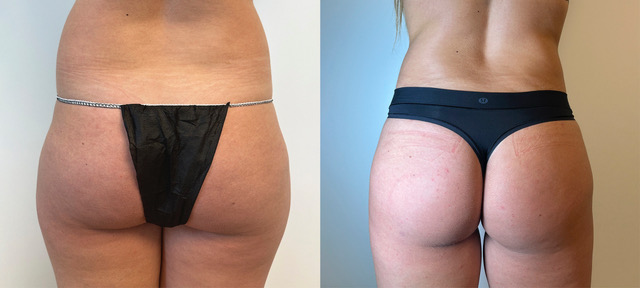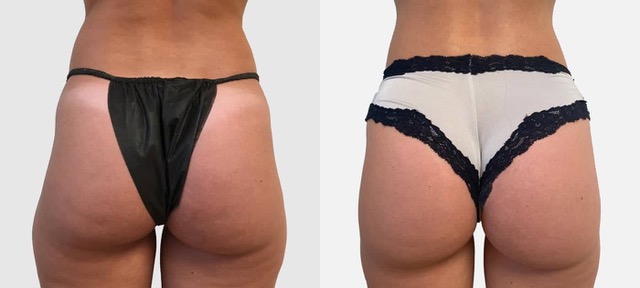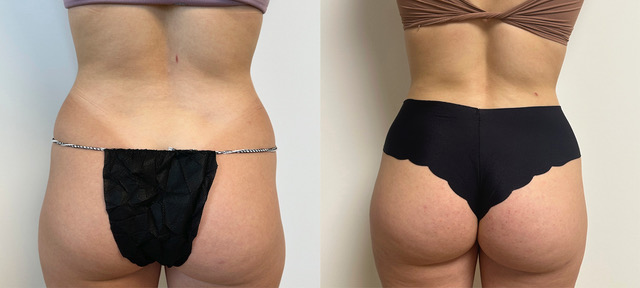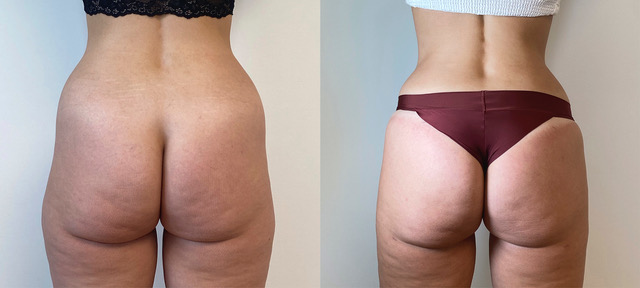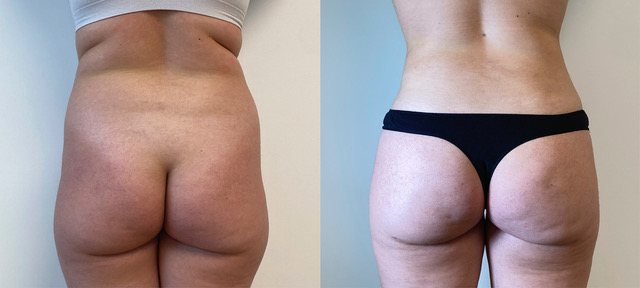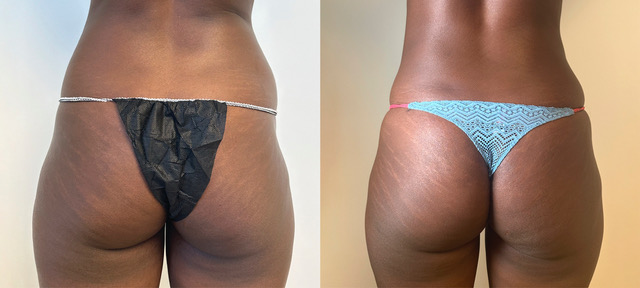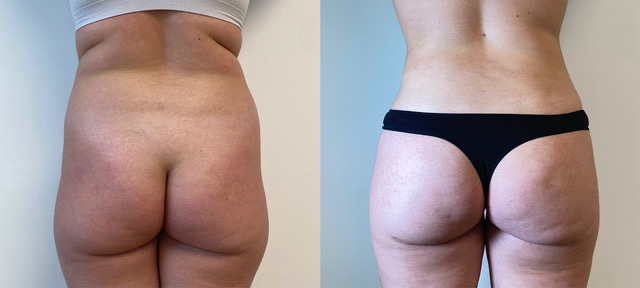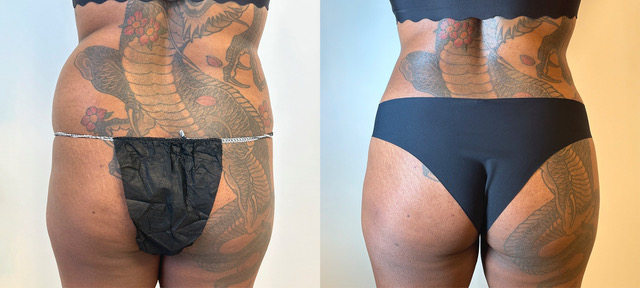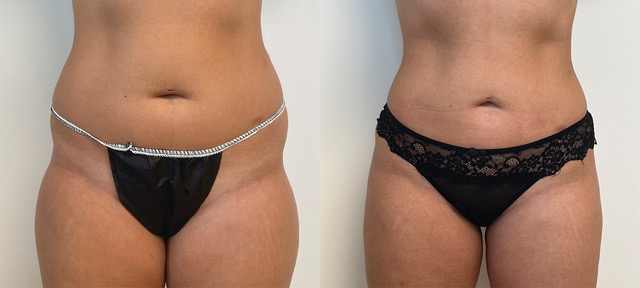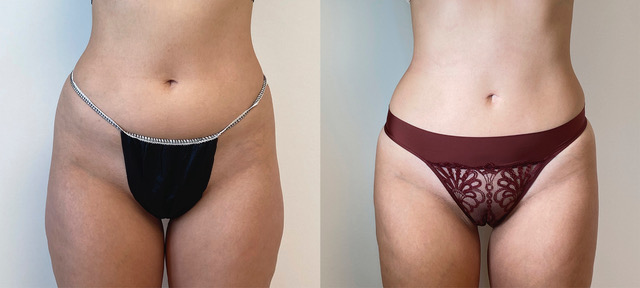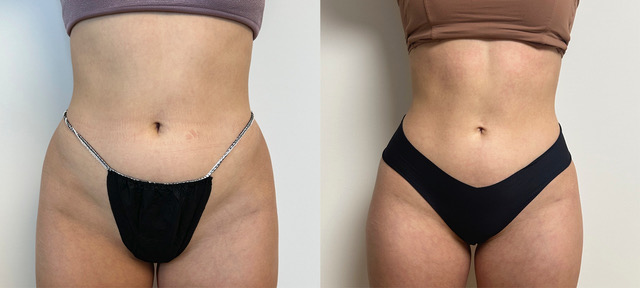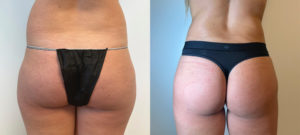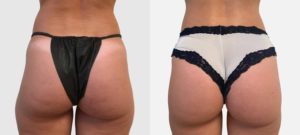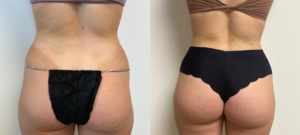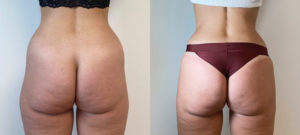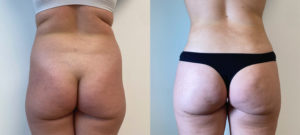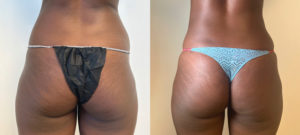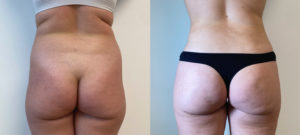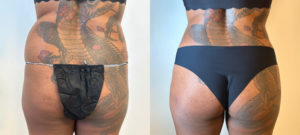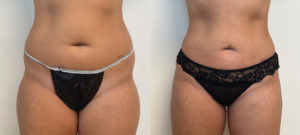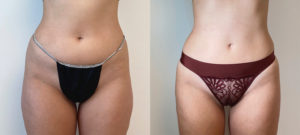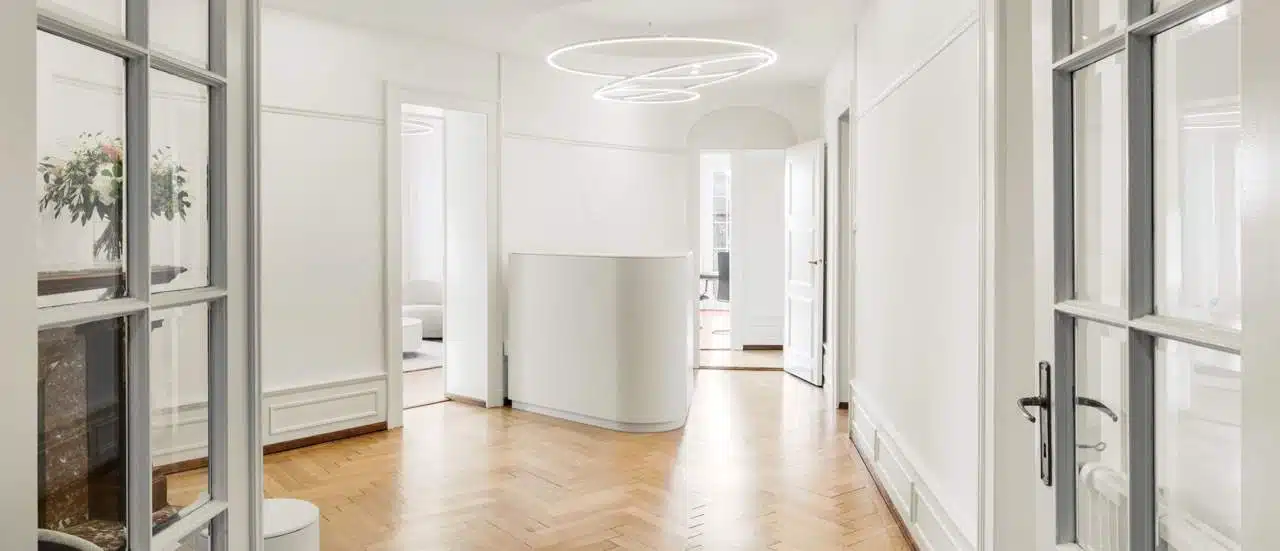Before the procedure
During the initial consultation, we check whether you actually have trochanteric depression and whether hip dip lipofilling is a good option for you. To do this, we need to find areas where we can remove fat: the areas for removal and injection are marked and discussed with you in front of a mirror. We will also draw the small incisions required for the procedure. We will look at your health, weight, and the thickness of your fatty tissue by performing a “pinch test”—the pinch test measures the number of centimeters of fat under the skin. We will discuss our EVL technique for hip dip lipofilling. A blood test is required before the procedure. We recommend that you stop smoking three weeks before and after the operation to optimize graft take.
The procedure
On the day of the procedure, the areas to be treated are marked while you are standing. Once you are lying down, the skin is disinfected and a sterile field is set up. Through small 3-4 mm incisions, a tumescent solution is injected to facilitate fat aspiration. The harvested fat is processed in a closed circuit using our Wells Johnson system. We then perform the EVL “Expansion Vibration Lipofilling” technique, which allows us to inject 30% more fat. The procedure is performed under local anesthesia or with sedation, depending on the patient's needs. Once the procedure is complete, a dressing and compression garment are applied to the liposuction areas to promote proper healing.
After the procedure
Fat resorption is normal after the graft, but some of the volume will remain permanently. In our extensive experience, between 60 and 80% of the fat remains in the hip dip injection area. To optimize the results of liposuction, we recommend wearing a compression garment over the liposuction areas day and night for three weeks, except when showering. You should not sleep on your side for two months. Bruising and slight swelling may occur, but these will disappear within a few days. You can resume social activities after 48 hours, but you should avoid sports for eight to twelve weeks to ensure that the graft takes properly. The results are immediately visible, but the final appearance can only be assessed after three months.
Risks and side effects
Hip dips are neither a defect nor a sign of poor health, but simply a characteristic of your body shape. They may not be present or may be deeply marked, as you can see in our before and after photos. Hip dips are a consequence of the shape of the pelvis and the distribution of muscle and fat around it. However, this indentation can cause an imbalance in the harmony of the body, mainly between the transition from the thighs to the hips. Having a “hole” in this area can sometimes make the saddle bags or hips appear more pronounced than they actually are.
It should be noted that the volume to be injected into the hip dips can be chosen. Some patients want the most natural result possible by filling in the “hole” so that there is a continuous line between the hip and the outer thigh without creating a bulge. Others, on the contrary, want a curvier look and a very “Latin” appearance at the hips.


